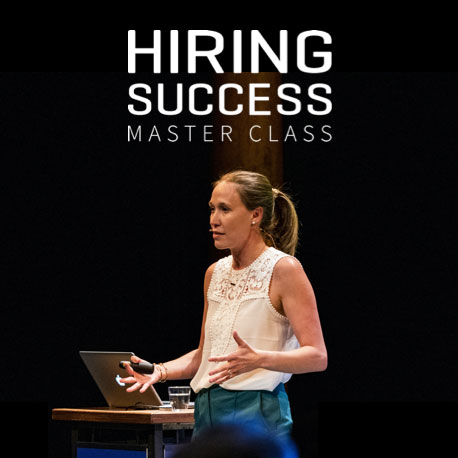
Sira Laurel joins us today on Hiring Success to talk about DEIB transformation through emotionally intelligent business practices. As a development leader, Sira has over 10 years of experience in L&D, DEIB, and HR transformation.
Article Highlights:
- Awareness: Acknowledge that DEIB is not a destination.
- Attitude: Learning is the goal, not the roadblock.
- Action: Start small and do something.
- Accountability: Recognize the power you do have.
- Reflecting on the Past Year
It’s interesting how time can change how we evaluate our own skill sets. I now consider being a “highly sensitive person”a gift, but this was not always the case. For years I cultivated a deep sense of shame and actively ignored this part of myself, attempting to assimilate into the pervasive culture of ‘emotionless working.’
‘High sensitivity’ is a relatively new term, coined by Dr. Elaine Aron to more positively describe diagnoses like ‘sensory integration dysfunction’ or later ‘sensory processing disorder,’ which were the labels I received in the 1980s. What all this simply means is I consciously take in more sensory input than over 80% of the population. This of course presented at first many challenges.
Because I’m more aware of the information coming in, I need to take time to process this input before acting. There’s nothing inherently wrong with this, but the negative labels I received made me feel like I was abnormal, and reinforced the limiting belief that I would never be able to keep up with the demand for quick decisions at work. In fact in many settings I felt like I wasn’t a fit, because the dominant culture had a preference for speed over deliberation.
Through self work, the help of many others, and the transition into a career in talent management, I had the opportunity to leverage my heightened sensitivity as a gift. It gives me the ability to create a better experience for my team and our candidates. I can see now how my neurological diversity is a competitive advantage. From developing compensation philosophies, bringing transparency to merit pay and promotion processes, overhauling benefits and perks programs or roadmapping whole-scale culture change, I have used my skills to bring diverse, equitable and inclusive values to life within organizations. These experiences provided a great deal of clarity on the key mindsets required for creating and evolving inclusive cultures at scale.
Today I want to share with you some of those learnings, by describing the lenses I use to increase empathy in leaders and meet diversity, equity, inclusion, and belonging (DEIB) goals even when the challenges seem too big to bear.
4 Lenses to Change Your Perspective on DEIB
Awareness: Acknowledge that DEIB is not a destination.
Of course, you will celebrate and acknowledge wins along the way, but there will never be a point where you are ‘done’ with DEIB. It’s not an item to be checked off, rather DEIB programs signal commitment on the behalf of your organization to continually engage on these topics.

The first step on your DEIB journey will be building awareness. You’ll want to take stock of how things are now in all sectors of DEIB, this could include surveys and employee interviews as well as tracking your recruiting data like pipeline demographics. Consider taking the Diversity Hiring Assessment offered on this site. This 15-20 minute questionnaire will pinpoint where you fall on the Diversity Hiring Maturity Model and provide tailored advice on next steps.
In addition to the topics surveyed in the assessment, some other questions you can ask yourself are:
- Is there a clear salary structure at our organization?
- Is there a clear feedback structure at our organization?
- How do I judge my employees’ performance? (i.e. Am I looking at data or relying too much on perception?)
These questions may make us feel uncomfortable, especially the last one. However, inherent and unconscious biases exist in us all and if we recognize this, we can take steps towards a fairer process. It’s not about blame, it’s about making your organization a place where high-performing talent can thrive. At one of my previous organizations, this meant eliminating the annual review for a quarterly 360 to promote more frequent feedback and surface employee sentiments never before known or understood. By including the feedback of direct reports and peers, we brought to light not just challenges, but strengths that we could now effectively reward. By surfacing key insights, we identified high value actions that took us from the culture we were to the culture we needed to be.
2. Attitude: Learning is the goal, not the roadblock.
Let’s say you implement a step towards your DEIB goals and you receive pushback or the results weren’t as you expected. This can be frustrating and demoralizing if all we want is to get things done, but I’ve found that success more often comes when the goal is to learn as opposed to “get results.”

If you implemented a program and got negative feedback, is it possible that you didn’t include key stakeholders in the decision making process? Often we forget to ask the people who we are trying to serve what they need. Did you do your due diligence to see if there were grassroots movements at your organization already making strides in this area, be sure to acknowledge their work and include those employees in the process.
When you adopt an attitude of learning, every challenge, setback, and criticism becomes an opportunity. These are helpful questions to ask yourself when you are experiencing negative emotions:
- If learning was my goal, how would I benefit?
- Can I name the emotions coming up right now?
- Is this feeling helping or hindering my progress in this moment?
- How are my thoughts in this moment helping me make this decision?
- What is the consequence of not doing this?
As a leader, the attitudes of gratitude, authenticity, compassion, and dedication all communicate to others that your ideas are worth following. You will never be a perfect diversity champion, nor will anyone on your team. My own personal journey has been full of missteps, assumptions and pre-meditations on what I thought an outcome would be, or what an interaction would yield.
By “showing up” with a closed mindset in a relationship with a finance director, I continuously met the resistance I “knew” would be there, only to realize with the help of a coach that I created a self-fulfilling prophecy based on my own biases. From then on, I brought an open energy to find common ground, and the relationship was forever changed.
Action: Start small and do something.
So where do you start? The answer is anywhere. Work with the employees & leaders of your organization to understand where you need to prioritize the most and start there. No matter how insignificant it seems. Remember that changing any part of the system changes the whole – including changing yourself.
Here are some simple but highly effective places to start:
- Do you take time to get to know each new employee?
- Do you work to understand the perspectives brought by all individuals?
- Do you have ways to actively gather input and ideas from candidates and employees?
- Do you acknowledge people in a friendly manner with common courtesy?
- Do you ensure your meetings have agendas and everyone is able to share their perspective?
You can also start asking yourself where your organization has supported your employees and where it can seek to improve. These are just a handful of starter questions from the DEIB plan I designed last year that you can use for your own organization (or personally) to start taking action today:
- Have we updated diversity commitment language across external channels and in open job descriptions?
- Have we banned ‘culture fit’ language?
- Are we representing visuals on our careers page with what we are seeking in our future talent pools?
- Have we reviewed and updated your job description language to be gender-neutral and a balance of masculine/feminine?
- Have we implemented blind screenings throughout the resume review process?
- Are we intentional about structured/standardized interviews and evaluations/scorecards?
- Are salaries based on standardized criteria and do we only negotiate salaries within our bands?
In my organizations, we redid all our job descriptions, updated the Careers page to showcase who we were becoming, implemented behavior and skills-based interview questions and facilitated training on increasing self-awareness, growth mindset and more, to help us shift what we do by shifting how and what we think before we do.
Accountability: Recognize the power you do have.

Nietzsche said, “even if the future offers us nothing to hope for, the wonderful fact of our existing at this present moment of time gives us the greatest encouragement to live after our own rules and measure…we have to answer for our existence to ourselves, and will therefore be our own true pilot.”
Becoming one’s true pilot means we must deliberately employ the self as an instrument of change. Some of us are natural pilots, but any one of us can choose to cultivate the sense of purpose and a drive to shift the conditions through which others can learn collectively to make progress.
- Be accountable to yourself: Including the thoughts and feelings you have and the actions you take. Be honest about what you’re doing and what you’re not doing, without judgment.
- Be accountable to others: Let other people know what you’re doing and why, and how it’s going.
- Hold others accountable: Make expectations on your team clear, and incorporate diversity goals into performance management.
Every company should have a set of core values, what it might not have is a way by which it measures employee behavior (what it looks like to act on these values). These core values likely are already in alignment with DEIB values and goals (and if not need to be revised).
By including a Likert-scale ranking question for values-based behavior in our quarterly 360s, and linking those ratings to profit-sharing, one of my organizations was able to shift behavior through systems that already existed, with hardly any additional legwork.
Reflecting on the Past Year
When I reflect on the last year, my feelings are wildly contradictory: unease and contentment, fear and confidence, despair and hope — all rolled into the strange reality of living through unprecedented times.
What I am saying probably sounds familiar to anyone trying to create positive change, there seems to be an insurmountable number of problems to solve.
The lenses presented here serve as guidance that talent leaders can use to start making sense of all that is DEIB. Their collective application has the ability to take us into a future where emotional intelligence is always present in the decisions we make with ourselves, others, and the organizations we create. Ultimately, I believe these lenses will shift not only how we do business, but what kind of business we do.
John F. Kennedy said we should not be discouraged that few of us will have the greatness to bend history, as each of us can work to change a small portion of events.This great game is best played with full mindfulness, where success is acknowledged not as big, but small.
You can change the world from where you are, wherever that may be. Start small, start now.

 Enroll in the Master Class & earn 6 SHRM credits
Enroll in the Master Class & earn 6 SHRM credits